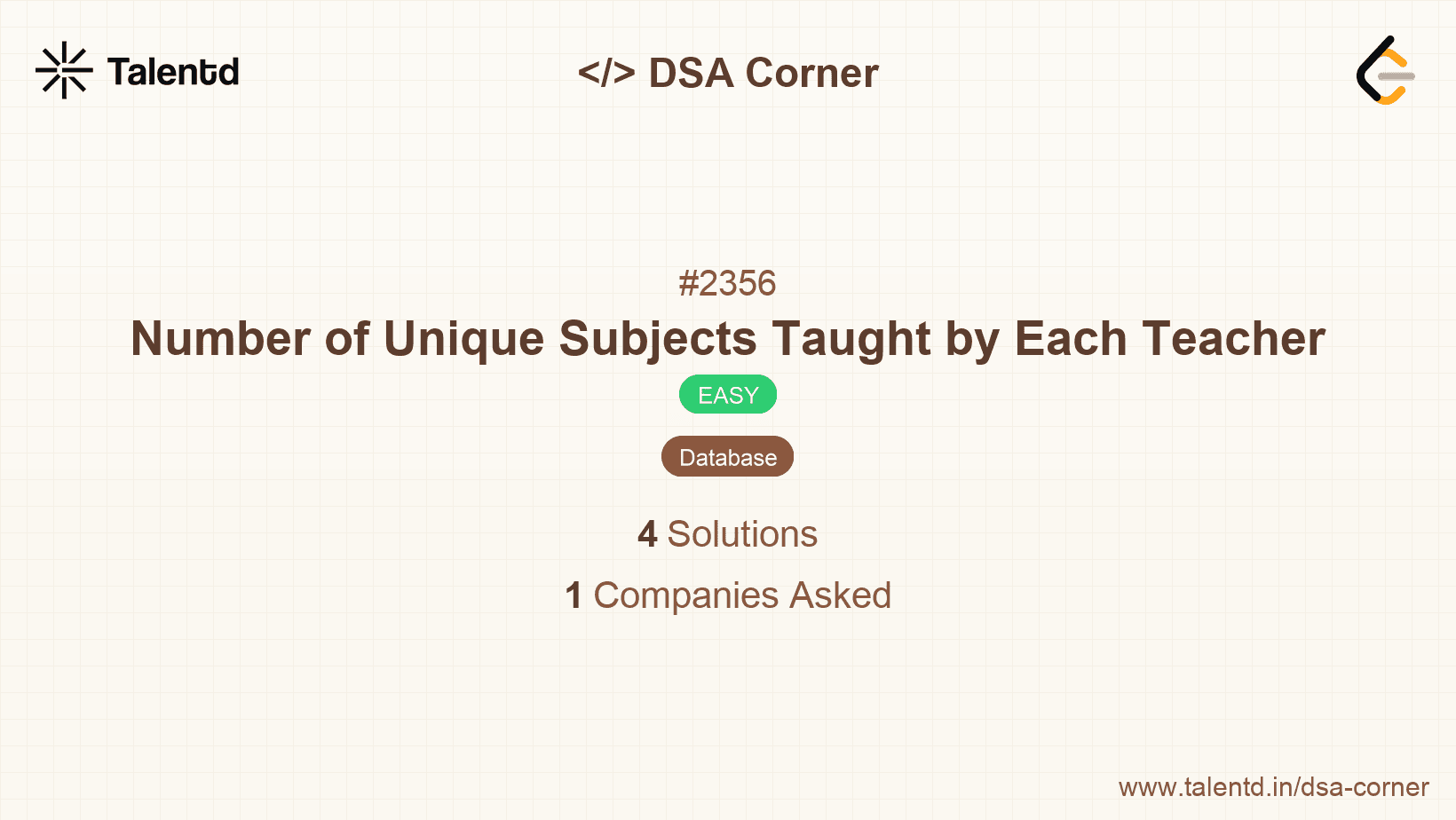
Sponsored
Sponsored
This approach utilizes hash maps (or dictionaries) to store the relationship between teachers and the unique subjects they teach. The usage of sets facilitates the storage of unique subject IDs for each teacher. After accumulating the subjects for each teacher, counting the number of unique subjects can easily be done by checking the length of each set.
This method will efficiently group, count, and return the results.
Time Complexity: O(n), where n is the number of records in the input table, assuming average O(1) time complexity for set operations.
Space Complexity: O(m), where m is the number of unique (teacher_id, subject_id) pairs.
1// JavaScript solution
2function countUniqueSubjects(teacherRecords) {
3 const teacherToSubjects = {};
4 teacherRecords.forEach(([teacherId, subjectId]) => {
5 if (!teacherToSubjects[teacherId]) {
6 teacherToSubjects[teacherId] = new Set();
7 }
8 teacherToSubjects[teacherId].add(subjectId);
9 });
10
11 const result = [];
12 for (const [teacherId, subjects] of Object.entries(teacherToSubjects)) {
13 result.push({ teacher_id: +teacherId, cnt: subjects.size });
14 }
15 return result;
16}
17
18// Example input
19const teacherRecords = [
20 [1, 2, 3],
21 [1, 2, 4],
22 [1, 3, 3],
23 [2, 1, 1],
24 [2, 2, 1],
25 [2, 3, 1],
26 [2, 4, 1]
27];
28
29// Function call
30console.log(countUniqueSubjects(teacherRecords));This JavaScript solution uses objects to map each teacher ID to a Set that contains their unique subject IDs. Iterating through the input data, it populates the Set for each teacher. In the end, it calculates the size of each Set and formats the results accordingly.
This approach imitates SQL operations by using arrays or similar data structures to first group data by teacher and then reducing the grouped data to count the unique subjects for each group. This approach can use sorting and manual iteration to simulate a GROUP BY operation.
Time Complexity: O(n) due to single-pass processing and set operations.
Space Complexity: O(m) corresponding to unique (teacher_id, subject_id) pairs.
1// Java solution
2import java.util.*
teacherToSubjects
In this Java solution, we simulate SQL GROUP BY and aggregation using Java collections such as HashMap and HashSet. The key for the map is the teacher ID, and the value is a set that contains unique subject IDs. The solution iterates over the input data, populating the map accordingly and then measures the size of each set to get the count of unique subjects per teacher.